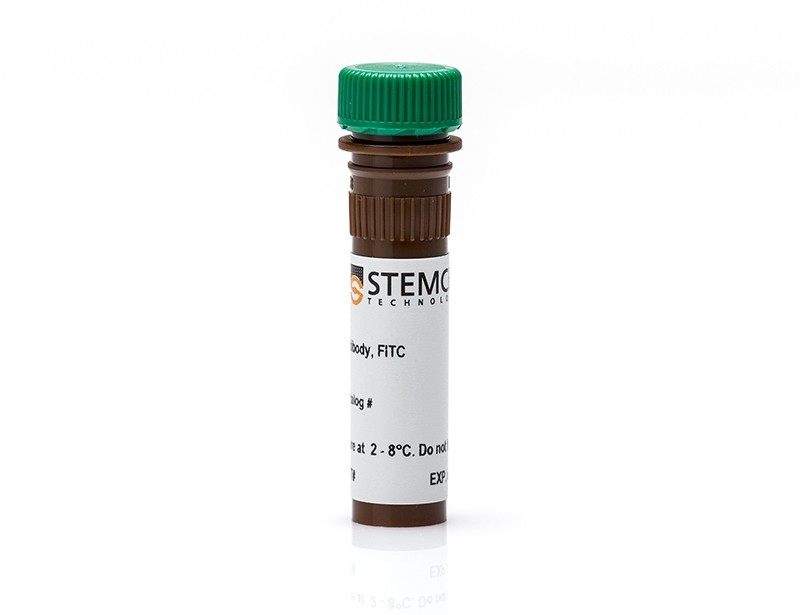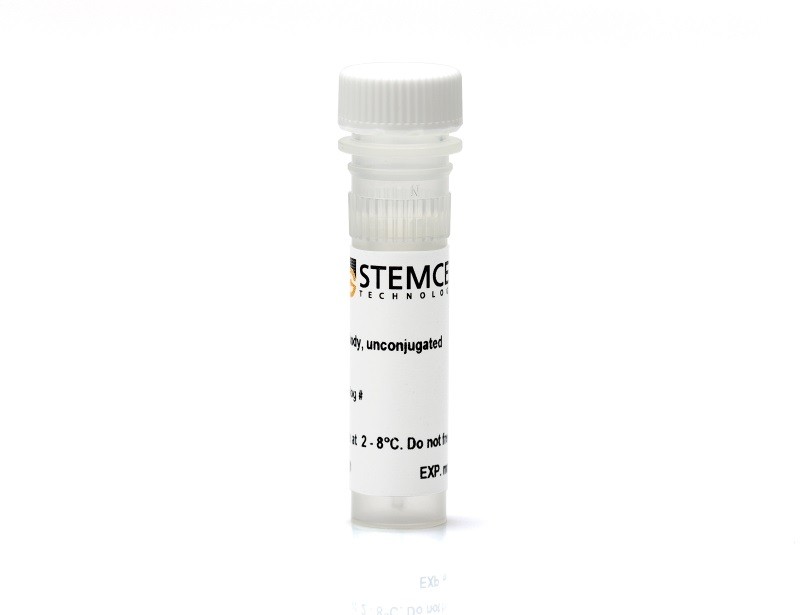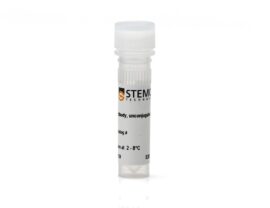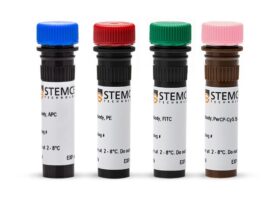

Overview
The HIM3-4 antibody reacts with CD33 (Siglec-3), an ~67 – 75 kDa type 1 transmembrane sialoadhesion protein of the immunoglobulin superfamily. CD33 is expressed on committed myeloid progenitor cells, monocytes, granulocytes, dendritic cells, mast cells, resident macrophages, and subsets of B cells and activated T and NK cells. CD33 is a major marker used to differentiate myeloid from lymphoid or erythroid leukemias. In peripheral blood it is expressed at high levels on monocytes and at lower levels on granulocytes. CD33 functions as a sialic acid-dependent cell adhesion molecule and mediates protein-glycan and protein-protein interactions between cells. It also has a putative role as an inhibitory receptor during the immune response. HIM3-4 reportedly binds to the extracellular C2 Ig domain of CD33, and does not block subsequent binding of several other anti-CD33 clones, including P67.6, WM53, and WM54. Two isoforms designated CD33M and CD33m have been identified and among these clones only HIM3-4 recognizes both isoforms.
Subtype: Primary Antibodies
Target Antigen: CD33
Alternative Names: gp67, p67, Sialic acid-binding immunoglobulin-like lectin 3, SIGLEC3, Siglec-3
Reactive Species: Chimpanzee; Human
Conjugation: FITC; PE; Unconjugated
Host Species: Mouse
Cell Type: Granulocytes and Subsets; Myeloid Cells
Application: Flow Cytometry; Immunocytochemistry; Immunofluorescence
Area of Interest: Immunology
Clone: HIM3-4
Gene ID: 945
Isotype: IgG1, kappa









